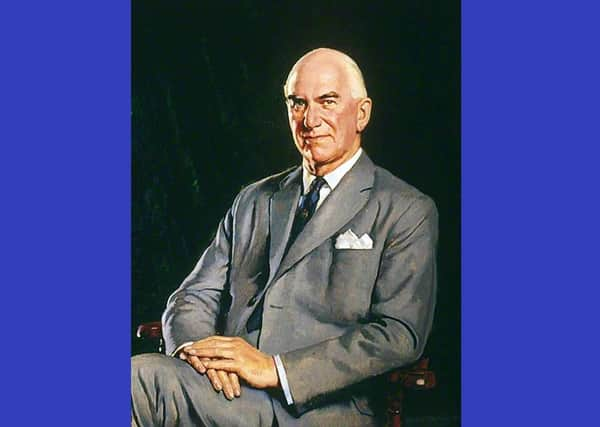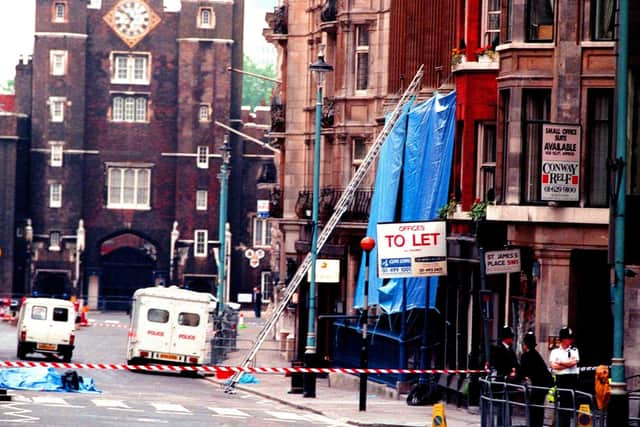Remembering 10-time MP who fought fascism – 30 years after IRA-linked death


Lord Kaberry, a former senior Conservative, died on March 13, 1991, several months after being blown up by the IRA at a London private members club.
Among his early achievements was serving as an artilleryman during the Battle of Dunkirk in June 1940, when fascist forces drove the outgunned British Army and their French allies into the sea.
Advertisement
Hide AdAdvertisement
Hide AdA former colleague said he also advised Margaret Thatcher during her early career.


Remarkably, very little has been written about Lord Kaberry despite his long list of accomplishments – and even finding pictures of him has been extremely difficult.
As well as being a peer he was knighted, and thus also known as Sir Donald Kaberry.
Former party colleague Lord Cope told the News Letter that the Leeds Grammar School pupil had embarked on a career as a solicitor, and had first taken elected office in 1930 on Leeds City Council.
Advertisement
Hide AdAdvertisement
Hide AdHe also joined the Territorial Army and when war with Germany broke out in 1939 he found himself part of the Allied forces in Europe.
Lord Cope said that by the time of Dunkirk, he was in command of an artillery battery, and won the Military Cross for his “calm leadership” in the field.
He went on to add that after D-Day he was once again posted to the continent, and “helped set up the occupation of Hamburg” after the Allies had seized the city.
Records show Lord Kaberry was elected no fewer than 10 times to the Leeds North West constituency between 1950 and 1983, and among his other roles was as vice-chairman of the Tory party from 1955 to 1961.
Advertisement
Hide AdAdvertisement
Hide AdLord Cope described him as a “respected elder statesman” and a “wise manager and counsellor of the party’s candidates” –adding that he had “recruited Margaret Thatcher to the candidates list and gave her advice in the early stages of her career”.
Lord Cope added: “He had a good war record against the Nazis (which was important in those days), and must have faced death many times when younger.
“Yet in the evening of his life he was the casual victim of bombers out to twist the democratic process of decision making by violence. Such deaths bred hatred of the Republican cause in England.”
On June 25, 1990, Sir Donald was believed to have been sitting in a front room of the Carlton Club in St James’s Street when the bomb detonated, just inside the front door of the venue.
Advertisement
Hide AdAdvertisement
Hide AdHe was taken to Westminster Hospital suffering from shock and smoke inhalation.
“His general health had been good, but from then on he declined,” concluded Lord Cope. “The verdict of the coroner’s inquest was that the bombing had been a material factor in his death.”
Sir Donald’s name appears in the list of Troubles conflict deaths in the history book ‘Lost Lives’, and on Ulster Univeristy’s CAIN site.
As well as wounding Lord Kaberry and 76-year-old porter Charles Henry, the bomb damaged memorials dedicated to members killed in the two World Wars.
Advertisement
Hide AdAdvertisement
Hide AdLord Lexden, the official historian of the Conservative Party, indicated about 20 people had been inside the club when the bomb went off.
Lord Kaberry believed he had been struck in the head by a portrait of Lord Home during the blast.
Despite his injuries he did leave hospital after a few weeks, but deteriorated and was re-admitted in September 1990.
The Sutton Index of Deaths (online as part of Ulster University’s CAIN project) notes that Lord Kaberry was one of 22 people who could have been considered either British VIPs or unionist politicians murdered during the Troubles.
Advertisement
Hide AdAdvertisement
Hide AdThe LA Times in 1990 reported that Margaret Thatcher was the club’s sole woman member, and had been in Dublin at the time of the explosion – something which may have motivated the bombers, who “resented recent progress in Anglo-Irish relations”.
Read more from this reporter:
Click here: Giant multinational retailer Redbubble caught marketing hundreds of paramilitary-themed items
A message from the Editor:
Thank you for reading this story on our website. While I have your attention, I also have an important request to make of you.
Advertisement
Hide AdAdvertisement
Hide AdWith the coronavirus lockdown having a major impact on many of our advertisers — and consequently the revenue we receive — we are more reliant than ever on you taking out a digital subscription.
Subscribe to newsletter.co.uk and enjoy unlimited access to the best Northern Ireland and UK news and information online and on our app. With a digital subscription, you can read more than 5 articles, see fewer ads, enjoy faster load times, and get access to exclusive newsletters and content.
Visit https://www.newsletter.co.uk/subscriptions now to sign up.
Our journalism costs money and we rely on advertising, print and digital revenues to help to support them. By supporting us, we are able to support you in providing trusted, fact-checked content for this website.
Alistair Bushe
Editor